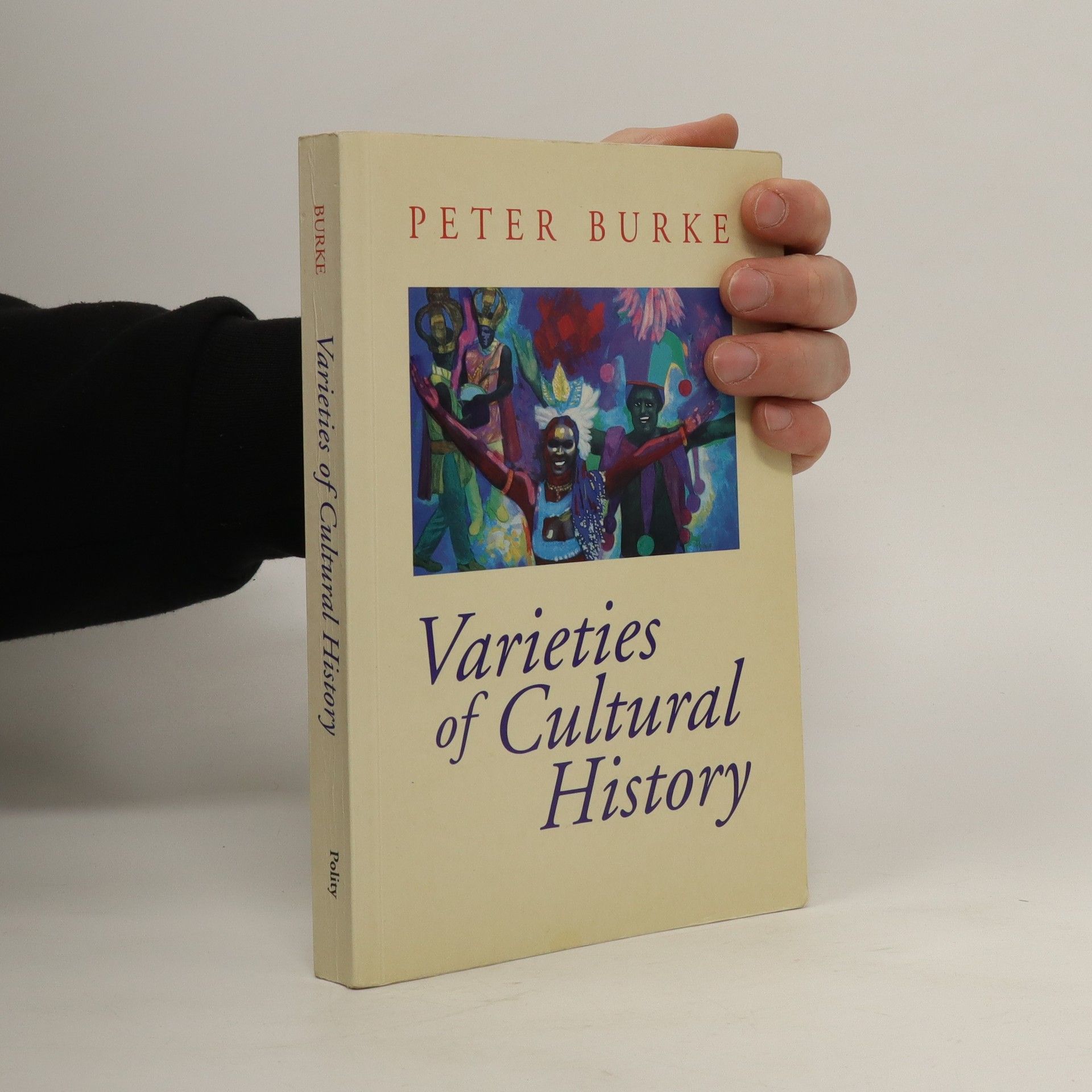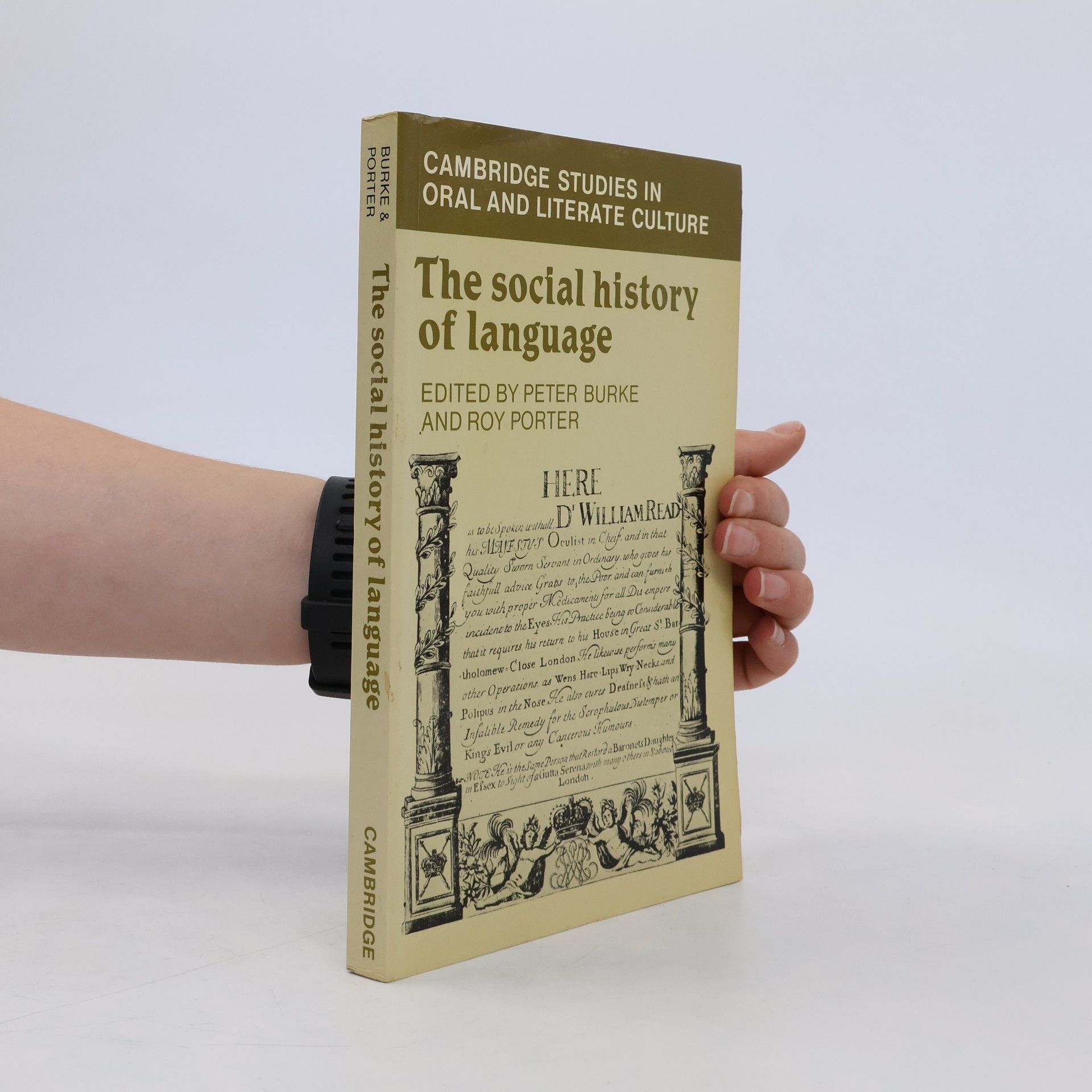Le mythe du Roi-Soleil n'est pas une création tardive: c'est Louis XIV en personne qui a construit sa statue et son personnage, déployant pour ce faire tous les moyens culturels et financiers à sa disposition. L'objet de ce livre est donc l'ensemble des représentations de Louis XIV en son temps (médailles, ballets, histoires officielles, etc.) - l'histoire d'une propagande au service du Roi-Soleil. C'est l'invention d'une image et d'un roi mi-homme mi-dieu qui est ainsi analysée. Les mécanismes de fabrication d'une idole, la manipulation des médias, les rapports entre les arts et le pouvoir sont au cœur de l'étude de Peter Burke, qui s'autorise aussi des comparaisons entre Louis XIV et d'autres dirigeants, de l'empereur Auguste aux présidents américains d'aujourd'hui.
Peter Burke Livres
Peter Burke est un historien britannique célébré pour ses travaux sur l'époque moderne. Ses recherches, cependant, transcendent les frontières historiques traditionnelles en soulignant la pertinence de l'histoire sociale et culturelle pour les enjeux contemporains. L'approche de Burke offre une perspective unique, aidant les lecteurs à comprendre les liens entre le passé et le présent. Sa vaste expérience et sa profonde connaissance contribuent à sa réputation d'historien important.







Birds of Chile
- 288pages
- 11 heures de lecture
This is the essential new field guide to the birds of Chile. Representing a great diversity of habitats, from the Andes in the north down to the tundra and sub-Antarctic rainforest of Tierra del Fuego in the far south, Chile is the breeding ground or temporary abode of 473 known species including 9 found nowhere else in the world. Birds of Chile covers them all, embracing not only the mainland but points offshore such as Easter Island as well as the Antarctic Peninsula and adjacent islands, plus the Falklands and South Georgia. In addition to being a friendly and fruitful birding destination in its own right, Chile is the starting point for many Antarctic cruises. Succinct, identification-focused text and distribution maps share a page opposite each of the 97 color plates to allow quick and easy reference. Between the boldfaced English name and the scientific name comes the Spanish name as used in Chile; this is important, for birders will find their quest far more enjoyable and effectual if they can explain to Chileans exactly what they are looking at, think they are looking at, or hope to be looking at. Since Chile's list of resident species is yet far from conclusive, vagrants and rarities are also included. Indeed, some birds once thought to be accidentals in Chile have since proved to be regulars, including the Westland Petrel, Least Sandpiper, Cliff Swallow, and Golden-billed Saltator. Compact, comprehensive, and easy to use, Birds of Chile is the essential field guide to the birds of this spectacular and tourist-friendly country. The essential new field guide to the birds of Chile 97 color plates with succinct text and maps on facing pages for quick reference and easy identification All 473 known species breeding in or visiting Chile, from the Andes in the north down to the tundra and sub-Antarctic rainforest of Tierra del Fuego in the south Also covers points offshore such as Easter Island as well as the Antarctic Peninsula and adjacent islands, plus the Falklands and South Georgia Compact, portable, and user-friendly
The Social History of Language
- 236pages
- 9 heures de lecture
This volume of essays brings together work by social historians of Britain, France and Italy.
Gilberto Freyre was arguably the most famous intellectual of twentieth-century Latin America. He was active as a sociologist, a historian, a journalist, a deputy in the Brazilian Assembly, a novelist, poet and artist. He was a cultural critic, with a good deal to say about architecture, past and present, and a public intellectual, whose pronouncements on race, region and empire - not to mention sex - made him famous in some quarters and notorious in others.The Masters and the Slaves , his most famous work, went through forty editions and has been translated into nine languages, made into a comic book and a television miniseries, while two directors (one of them Robert Rossellini) planned to turn it into a film. Yet he is not well known outside Brazil. Freyre was a major social thinker, one of the few who have not come from Western Europe or the USA, and this book argues that we should take account of the pioneering work of this gifted intellectual. His ideas are of particular relevance today for both political and academic reasons. His interest in gender, ethnicity, hybridity, identity, globalization, and capitalism ensures that his ideas are still provocative and topical, and ready to be introduced to a wider audience.
The aim of this book is both to illustrate and to discuss some of the main varieties of cultural history which have emerged since the questioning of what might be called its "classic" form, exemplified in the work of Jacob Burckhardt and Johan Huizinga. Among the themes of individual chapters are the history of popular culture, the history of Carnival, the history of mentalities, the history of gestures, the history of jokes, and even the history of dreams. The emphasis of both the introduction and the case-studies which follow is on the variety of forms taken by cultural history today. The classic model has not been replaced by any new orthodoxy, despite the importance of approaches inspired by social and cultural anthropology. Variety is to be found in the cultures studied as well as among their historians. The case-studies included in the volume come not only from Europe (and in particular from Italy) but also from the New World, especially Brazil. Particular emphasis is placed on the importance of cultural encounters, cultural conflicts, and their consequences, whether these consequences should be described in terms of mixing, syncretism or synthesis. Written by one of the leading cultural historians in Europe today, this book will be of particular interest to students of early modern Europe, of the encounters between European culture and the New World, and to students and scholars interested in problems of historiography.
Sociology and History (RLE Social Theory)
- 110pages
- 4 heures de lecture
The book explores the interplay between sociology and history, highlighting how each discipline can enrich the understanding of societal change. By addressing the stereotypes that often separate sociologists and historians, it emphasizes their complementary nature—where structured change and changing structures coexist. The author aims to foster collaboration between the two fields, encouraging a more nuanced approach to studying social dynamics and historical contexts.
The Italian Renaissance
- 312pages
- 11 heures de lecture
In this brilliant and widely acclaimed work, Peter Burke presents a social and cultural history of the Italian Renaissance.
What is the History of Knowledge?
- 160pages
- 6 heures de lecture
What is the history of knowledge? This engaging and accessible introduction explains what is distinctive about the new field of the history of knowledge (or, as some scholars say, knowledges in the plural ) and how it differs from the history of science, intellectual history, the sociology of knowledge or from cultural history.
Cultural translation in early modern Europe
- 264pages
- 10 heures de lecture
This groundbreaking 2007 volume gathers an international team of historians to present the practice of translation as part of cultural history. Although translation is central to the transmission of ideas, the history of translation has generally been neglected by historians, who have left it to specialists in literature and language. This book seeks to achieve an understanding of the contribution of translation to the spread of information in early modern Europe. It focuses on non-fiction: the translation of books on religion, history, politics and especially on science, or 'natural philosophy', as it was generally known at this time. The chapters cover a wide range of languages, including Latin, Greek, Russian, Turkish and Chinese. The book will appeal to scholars and students of the early modern and later periods, to historians of science and of religion, as well as to anyone interested in translation studies.
This book provides a critical history of the movement associated with the journal Annales, from its foundation in 1929 to the present. This movement has been the single most important force in the development of what is sometimes called the new history .